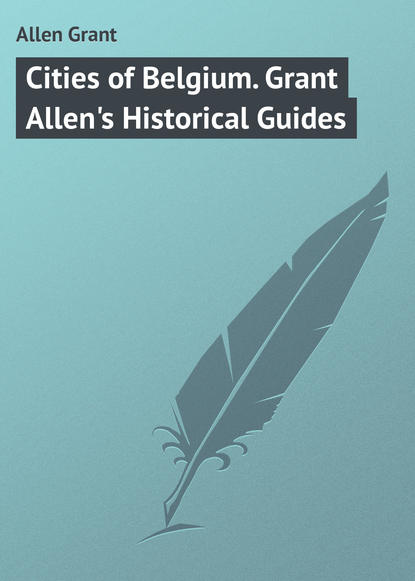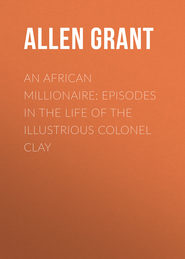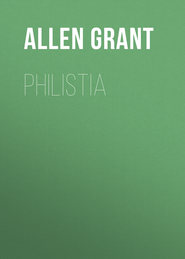По всем вопросам обращайтесь на: info@litportal.ru
(©) 2003-2024.
✖
Cities of Belgium. Grant Allen's Historical Guides
Настройки чтения
Размер шрифта
Высота строк
Поля
Go on into
Room D,
containing more works of the Transition. These large altar-pieces of the early 17th century, the period of the greatest wealth in Antwerp, though often frigid, as works of art, are at least interesting as showing the opulence and the tastes of the Antwerp guilds during the epoch of the Spanish domination. They are adapted to the huge Renaissance churches then erected, as the smaller triptychs of the 15th century were adapted to the smaller Gothic altars.
529. Feast of Archers, with the King of the Archers enthroned in the background.
696, 697. Tolerable portraits by Pourbus.
183. A Madonna by Gossaert.
114. Frans Floris: St. Luke painting, with his bull most realistically assisting, and his workman grinding his colours. From the old Academy of Painters, whose patron was St. Luke. Italian influence.
135. Ambrose Francken: Loaves and fishes.
148. The same. Decollation of St. Cosmo and St. Damian: painted for the Guild of Physicians, of whom these were the patron saints.
357. A splendid and luminous Titian, in the curious courtly ceremonial manner of the Venetian painters. **Pope Alexander VI. (Borgia), in a beautiful green dalmatic, introducing to the enthroned St. Peter his friend, Giovanni Sforza da Pesaro, Bishop of Paphos, and admiral of the Pope’s fleet. At the bishop’s feet lies his helmet, to show his double character as priest and warrior. He grasps the banner of the Borgias and of the Holy Church. In the background (to show who he is), the sea and fleet. St. Peter’s red robe is splendid. The Venetians frequently paint similar subjects, – “Allow me to introduce to your Sainthood,” etc. This is a fine work in Titian’s early harder manner, still somewhat reminiscent of the School of Bellini. Its glorious but delicate colour comes out all the better for the crudity of the works around it.
146. Ambrose Francken: St. Cosmo and St. Damian, the Doctor Saints, amputating an injured leg, and replacing it by the leg of a dead Moor. In the background, other episodes of their profession. (Wing of the triptych for the Guild of Physicians.)
83. M. De Vos: Triptych, painted for the Guild of the Mint, and allusive to their functions. Centre, The Tribute Money. “Render unto Cæsar,” etc., with tempting Pharisees and Sadducees, and Roman soldiers. In the foreground, St. Peter in blue and yellow, with his daughter Petronilla. Left wing: Peter, similarly habited, finds the tribute money in the fish’s mouth. Right wing: The Widow’s Mite. (The French titles, “Le Denier de César,” “Le Denier du Tribut,” “Le Denier de la Veuve,” bring out the allusion better.)
88. M. De Vos: St. Luke painting Our Lady, with his bull, as ever, in attendance. The wings by others. L., St. Luke preaching. R., St. Paul before Felix. From the altar of the (painters’) Confraternity of St. Luke in the Cathedral.
113. Frans Floris: Adoration of the Shepherds. Note persistence of formal elements from old School, with complete transformation of spirit.
663. Floris: Judgement of Solomon.
112. Frans Floris’s horrible St. Michael conquering the devils; the most repulsive picture by this repulsive and exaggerated master.
Right and left of it, good late Flemish portraits of donors.
483. Portrait by Van Veen, Rubens’s master.
Room E
contains chiefly works of the school of Rubens, most of which can now be satisfactorily comprehended by the reader without much explanation. I will therefore treat them briefly.
Left of the door,
82. A Nativity, by De Vos. Can be instructively compared with earlier examples.
57. Good 17th century landscape.
646. Attributed to Brueghel: Paying tithes.
644. P. Brueghel the Younger: A village merry-making (“Kermesse Flamande”). With more than the usual vulgarity of episode.
722 and 724. Capital portraits.
Good Still life, etc.
Room F
contains nothing which the reader cannot adequately understand for himself. Omit Room G for the present (it contains the Dutch Masters), and turn instead into
Room H,
mostly devoted to works of the School of Rubens.
End Wall, 305. Rubens: *The Last Communion of the dying St. Francis of Assisi. A famous work, in unusually low tones of colour – scarcely more than chiaroscuro. St. Francis, almost nude, is supported by his friars. Above, angels, now reduced to cherubs, wait to convey his soul to Heaven. Painted for the altar of St. Francis in the Franciscan Church of the Récollets. See it from the far end of the room, where it becomes much more luminous.
On either side, 662, good portrait by S. De Vos (himself, dashing and vigorous: every inch an artist): and
104. C. De Vos: Admirable and life-like **portrait of the messenger or porter of the Guild of St. Luke, the Society of Painters of Antwerp, exhibiting the plate belonging to his confraternity. He is covered with medals, which are the property of the Society, and has the air of a shrewd and faithful servant. This living presentment of a real man is deservedly popular.
661. Tolerable portrait by C. De Vos.
403. Van Dyck’s *Entombment (or Pietà), often called Descent from the Cross. This is one of his noblest pictures, but badly restored.
335. Angry swans disturbed by dogs. Snyders.
215. Jordaens: Last Supper. The effect of gloom somewhat foreshadows Rembrandt.
401. Van Dyck: **A Dominican picture (Guiffrey calls it “cold and empty”), painted at his father’s dying wish for the Dominican Nunnery at Antwerp. The two great saints of the Order, St. Dominic, the founder, and St. Catherine of Assisi, the originator of the female branch, stand at the foot of the Cross, which is itself a secondary object in the picture. St. Dominic looks up in adoration; St. Catherine, wearing the crown of thorns, fervently embraces the feet of the Saviour. On the base, a child angel, in a high unearthly light, with a half extinguished torch, points with hope to the figure of the crucified Lord. The whole is emblematic of belief in a glorious Resurrection, through the aid of the Dominican prayers. Interesting inscription on the rock: “Lest earth should weigh too heavily on his father’s soul, A. van Dyck rolled this stone to the foot of the Cross, and placed it in this spot.”
381. Van Hoeck: Madonna and Child, with St. Francis, from the Franciscan Church of the Récollets.
660. Tolerable portrait by C. De Vos.
406. Van Dyck’s noble **Crucifixion, with the sun and moon darkened. One of his most admirable pictures.
677. Jordaens: **Charming family scene, known by the title of “As sing the Old, so pipe the Young.” Three generations – grandparents, parents, and children – engaged in music together. Very catching: a most popular picture.
734. Good *portrait of a priest, by Van Dyck.
402. Fine *portrait of a bishop of Antwerp, by Van Dyck.
404. Van Dyck: **Pietà, altar-piece for a chapel of Our Lady of the Seven Sorrows. Our Lady holds on her lap the dead Christ, while St. John points out with his finger the wound in His hand to pitying angels. All the formal elements in this scene – Our Lady, St. John, the angels, etc. – belong to the earlier conception of the Pietà, but all have been entirely transfigured by Van Dyck in accordance partly with the conceptions of the School of Rubens, though still more with his own peculiar imagination. It is interesting, however, to note in this touching and beautiful picture, full of deep feeling, how far the type of the St. John has been inherited, remotely, from the School of Van der Weyden. Even the red robe and long hair persist. The features, too, are those with which we are familiar. This is one of the gems of the collection. It shows the direct influence of Italian travel modifying Van Dyck’s style, acquired from Rubens.
This room also contains several other excellent works of the School of Rubens or his more or less remote followers, which I need not particularize.
Now continue into
Room I,
containing what are considered to be the gems among the Rubenses and the later pictures.











